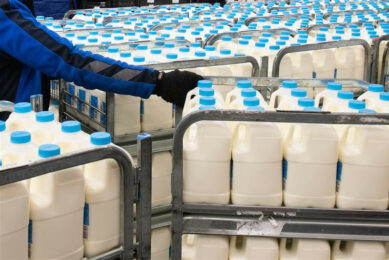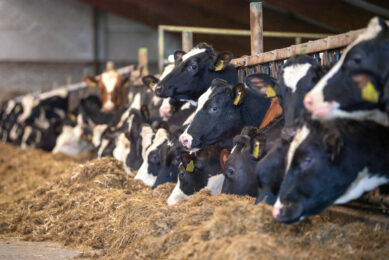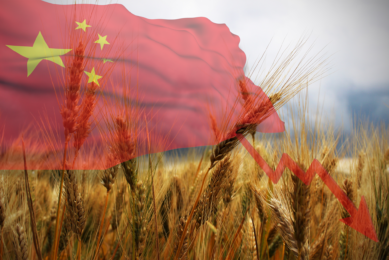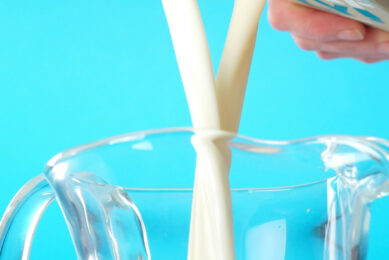“You would not expect farms in the deserts of China”
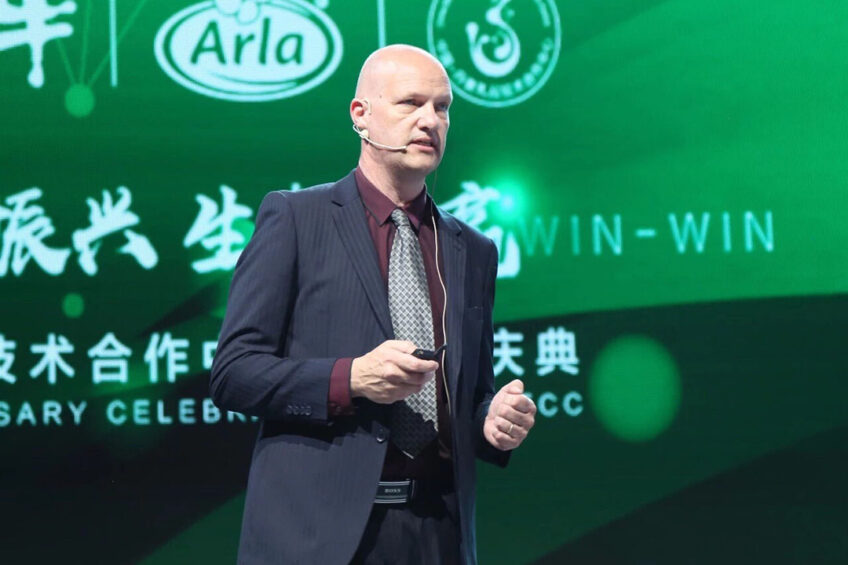
Do large-scale dairy farms come to mind when thinking of China? The last few years have seen a huge change in the dairy farming sector in China. Snorri Sigurdsson, senior project manager at Arla Foods, tells us more about how rapidly the sector is taking shape with some farms boasting tens of thousands of cows. With dairy farms even set up in the deserts of China, this impressive transformation is a trend predicted to continue as the country’s dairy industry is currently making huge leaps.
Tell me about some major changes you have seen in the Chinese dairy market over the last few years?
The major change I have witnessed is for sure the rapid development from small farm holders to big farms. Only a few years ago we serviced and helped many farms with only a few dozen cows and possibly up to 200 cows, but today we visit hardly any farms with less than 500 cows and now we often visit farms with more than 1,000 cows. The main reason for this change in only a few years is definitely related to the growing dairy market in China that has led many companies into dairy farming, some of them building many farms with up to tens of thousands of cows. Many of those big farms have drawn in cows and employees from the small farms that at the same time have struggled to comply with the tough rules and regulations we have today for milk production in China. This has also led to impressive professionalism in the dairy farms that have given us a good foundation to improve the work routine at the farms. It has also led to a good increase in the daily yield of the cows. Now we are seeing the delivery of over 30kg, with the best farms producing a daily average of 40kg per cow. That is not easy to get from a farm with thousands of cows, so we are quite happy with this result.
PROFILE
Snorri Sigurdsson participates in the work of many international organisations within his field of expertise and is on the International Dairy Federation (IDF) standing committee on-farm management. Between 2017 and 2021, Sigurdsson was the leader of CDMTCC, a joint venture between the dairy companies Arla Foods and Mengniu in China. Today he leads a project for Arla Foods in Nigeria, where the dairy cooperative is building up local production of milk in cooperation with the local authorities.
Have farming practices changed rapidly and extensively in China? And how?
The main change is related to the development of the farms from small to big. It has been a pleasant surprise to witness how open and willing the farmers and farmworkers are to take on dairy farming advice, and also it is surprising how fast they have adjusted their approach or their way of working after being advised. I often wonder if their short time in the business possibly helps them to be more open to a different way of working with cows and milk production than farmers and farm employees who have been working with cows for generations. They do not question the advice they get and because of the structure of the work on the dairy farms in China, when the farm owner decides that things need to change, that change happens overnight! It is truly amazing to observe.
China: Preventing heat stress in non-milking animals
In just a few years the landscape of Chinese dairy farming has changed dramatically, going from small household farms to professional and effective dairy operations. Successful farm management is, therefore, a top priority, especially when it comes to heat stress which can affect all animals on-farm.
In terms of nutrition, automation, and milking practices, what are some of the major trends there?
On the nutritional front, we see dairy cows in China, mostly Holstein cows, that are fed a typical Total Mixed Ration (TMR) as in many other countries. Locally, farmers grow corn for silage production and some also have grass production or alfalfa, but many do not grow their own protein source. A lot of the feed for the animals is either locally bought or imported like soya, dry alfalfa, etc.
The major trend in milking is the big rotaries; 80-place rotaries are probably the most common at the bigger farms, but the normal fast-exit milking parlour is also quite common at the farms with about 2,000 cows or fewer.”
Automatic milking systems (AMS) are not commonly used in China; however, there are some farms with AMS, but we have not yet seen it take off like in many other countries. The reason for this is probably related to the access that the dairy farms in China have to employees and to people who are willing to work on farms. This has also led to less automation being implemented on-farm and this is even the case with newly built dairy farms. Manure scrapers, feed pushers, sweepers, etc.; these roles are not usually automated but performed by farm employees.

Does the Chinese culture in some way affect how dairy farms are being run? Are there notable comparisons to western dairy farming?
A few years back in China we had many small farms that often had 1 cowshed together with many others in a cooperative. Today those farms are usually owned by one family that has basically bought out the other farmers. The design of those farms is quite similar to the loose housing dairy farm design we see in other countries, with obvious differences depending on where in China the farm is. It is good to remember that China is a similar size to Western Europe, so the conditions for operating a dairy farm are quite different. For example, the conditions at Finnish dairy farms in the north are quite different from those in the Greek dairy farms in the south.
You have said that Chinese dairy farming is barely “on the map” – can you elaborate?
What I mean by this is that when you read about dairy production in the world, few people write or talk about Chinese dairy production, even though it is actually very advanced and has developed very fast as I have mentioned. The reason for this is probably simply because not many know about this situation, understandably, as this development in China has mainly happened over the last 10 years or so.

What are some of the major issues in milk supply and production?
The major issue is the huge growing demand for dairy products that puts pressure on local production, which has a tough time keeping up.
Today, local production aims to supply 70% of the dairy consumed in China, but to keep up with the demand growth each year new farms need to be built or the older ones expanded. This poses some challenges as land access is a limiting factor, but by thinking outside the box the Chinese have established farms in areas where you would not expect to see a dairy farm, like in the deserts of China!”
What is the average farm size in China?
The large-scale farms account for a lot of the milk production but the average size farm is still quite small because in China even if you only have 1 cow you are considered to be a dairy farm, and many families still have a cow or 2 for a personal supply of milk. This milk never enters the market but pulls the average farm size in China down.
In terms of sustainability, can you give some examples of how big farms deal with this concept and the use of antibiotics?
Our experience with China shows that the mindset towards antibiotic use is quite different from the one we know in Europe. Today more and more dairy farmers around the world are starting to use Selective Dry Cow Therapy (SDCT) while treating the cows. As many dairy farmers know, this method has been used for more than 2 decades now and was actually already mandatory in Denmark back in 1995. This method has greatly impacted antibiotic usage but has not really taken off in China yet. The main reason is probably connected to the rapid development of the dairy farming industry where the infrastructure and service environment have not been able to follow as quickly as farmers would like. Therefore, the access to laboratories that can analyse milk quickly, like with PCR tests, is not available everywhere in China. This will of course come, and prudent use of antibiotics is on the agenda of the government.

What impact has Covid-19 had on the sector, and has it changed practices at farm level?
As most people know, Covid-19 first affected China and people living there. When the lockdown in major parts of the country was put in place, the impact on dairy farms was similar to what farmers have experienced in other countries. First there was some surplus of milk on the market but that changed quickly into demand with people staying home and using more conventional dairy products. The food service business suffered as public places and restaurants closed and there was a consequent lack of consumption of dairy products, but overall impact for local dairy production was not huge.
Covid-19: Impact on the global dairy sector
The coronavirus has had a huge impact on daily life from the man on the street to businesses. And the dairy sector, even more essential than ever, has not gone unscathed. Keep up-to-date.
Over the last few years, Arla Foods and the Chinese dairy company Mengniu have been working closely together to improve local dairy production. What improvements have been made so far?
We began our cooperation back in 2012 when these 2 companies founded China Denmark Milk Technology Cooperation Center (CDMTCC) with the main goal of improving dairy farming in China. Back then the dairy farming situation in China was quite different from what it is now.
The farms were small, milk quality was not always the best, improvements could be made on the animal welfare front and general knowledge about dairy farming was lacking.”
That is why the project steered towards tackling these aspects with training sessions, seminar activities, conferences and workshops, study tours to Europe, hundreds of advisory visits to farms and the publication of a huge number of educational resources for local farmers in China. All this has led to a totally different situation today and even though CDMTCC cannot take all the credit for the development, the work has had a very positive impact and helped local farmers to improve their dairy farm operation, particularly its productivity.

China has really excelled in milk production since the 1990s; can you summarise how you see the dairy sector in the next 5 to 10 years?
It would not surprise me at all to see the trend continue with more large-scale farms, that is, farms with at least 3,000 cows and 1 rotary milking system. We have seen that these farms seem to be very good on the productivity side, and this is also something we feel that different local authorities in China see as part of their future planning within agriculture. Clusters with maybe 20 big farms are already under construction in several places today in China with 60,000–80,000 cows each. This also seems to be the trend in China today. I do not foresee automation taking over completely, but I think we will also see growth on that front, especially with the growing economy. For example, we have seen in other countries that this growth has led to people moving from the countryside to the cities – and this situation will force farmers to look for more automated solutions in China.
Arla Foods, headquartered in Viby, Denmark is the 4th largest dairy company in the world in terms of milk intake and the world’s largest manufacturer of organic dairy products. The cooperative is owned by over 9,400 dairy farmers in Western Europe and Scandinavia. The current owners are based in 7 countries: Sweden, Denmark, the UK, Germany, Belgium, Luxembourg, and the Netherlands.
China Mengniu Dairy Co., Ltd, headquartered in Hohhot, Inner Mongolia, China, manufactures and distributes dairy products, operating through the following segments: liquid milk products, ice cream products, milk powder products, etc. It is China’s second leading dairy enterprise, ranking among the top-10 dairy enterprises in the world since 2017. Arla Foods and China Mengnui Dairy Company founded CDMTCC in 2012, with the main aim being to improve dairy farming in China and take the sector to the next level.
Join 13,000+ subscribers
Subscribe to our newsletter to stay updated about all the need-to-know content in the dairy sector, two times a week.



